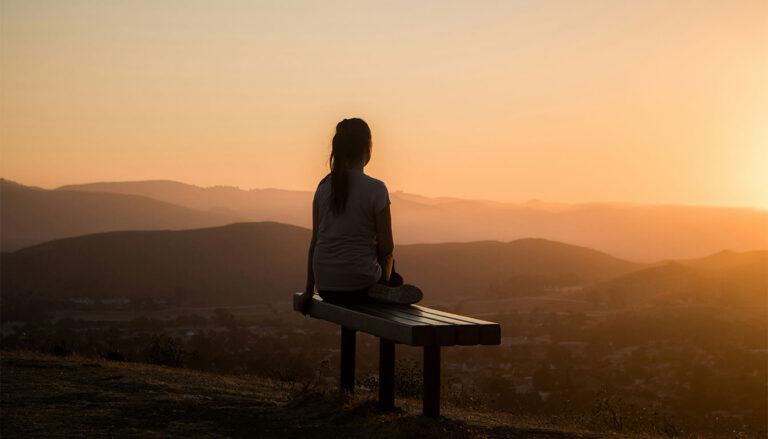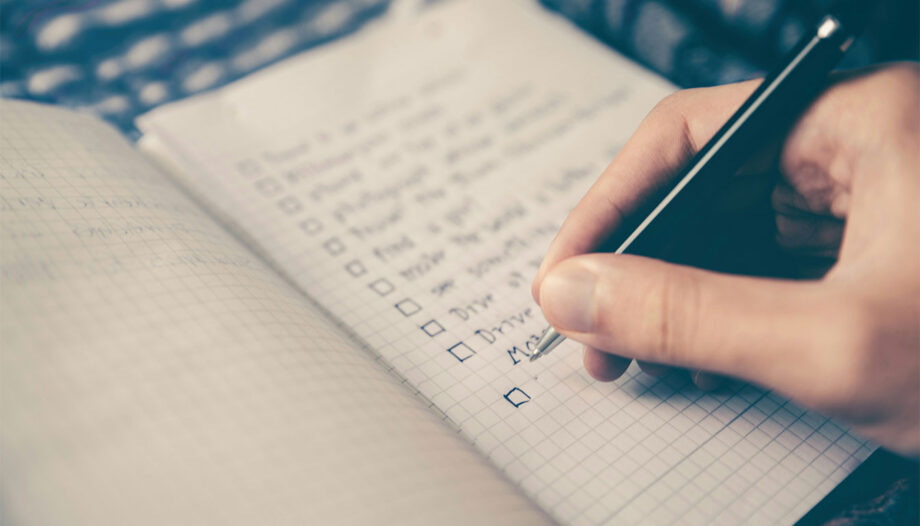Life online shapes health in big ways. Most people in the UK now visit online communities daily, which can bring belonging, quick support and honest conversations.
At the same time, harmful media and hostile spaces may erode confidence and make people feel worse. This brief guide offers simple, practical ways to choose safer spaces, set boundaries, fact‑check posts and guard privacy.
Examples matter: peer support like Mind’s Side by Side and condition forums such as Diabetes UK show how positive groups work. Polling from April 2025 found many young people access these spaces daily, though a sizeable share encounter disturbing content.
Below you will find clear sections on picking supportive communities, curating feeds, tackling doomscrolling, balancing online time with movement and nature, dealing with body image and self‑esteem, and where to get help. There are evidence‑informed tips, UK helplines and ways to get involved in awareness, research and fundraising.
It is okay to leave any space that doesn’t make you feel safe. Prioritise comfort, set simple rules for evenings, and try swapping screen time for short walks or nature breaks to restore calm.
Key Takeaways
- Online communities can offer belonging but may also expose people to harmful media.
- Simple actions—privacy checks, fact‑checking and time limits—reduce risk.
- Balance screen time with movement and time outdoors to boost health.
- UK examples include Side by Side and the Diabetes UK forum.
- Helplines: YoungMinds (online), Childline 0800 1111, The Mix messenger support.
- Get involved in awareness, research and fundraising to build safer spaces.
Choose supportive online communities that make you feel safe
Online groups should feel like a welcoming room, not a place that drains energy. A positive community offers belonging, acceptance and a safe space to be vulnerable. Many people find peer forums and interest groups help them enjoy movement, creativity and time outdoors.
What good versus bad spaces feel like
Good spaces are inclusive, respectful and moderated. Members follow clear rules and reporting tools exist. They make people feel seen, heard and supported.
Harmful spaces pressure members to share personal details, tolerate bullying or post content that chips away at self‑worth. Trust how a place makes you feel in the moment.
Finding moderated, interest-based groups that lift mood
Look for moderated groups with topic focus. Examples include Mind’s Side by Side for peer support and the Diabetes UK forum for condition-specific discussion. Local Strava clubs or hobby WhatsApp groups often encourage movement and social meet-ups.
When to step back or leave a harmful group
Do a quick checklist before joining fully: is it moderated, do I feel better after visiting, are there boundaries and can I control what I share?
Leaving a harmful group is a healthy choice; there are many other supportive communities to try.
- Tips: protect privacy, set simple boundaries, and fact‑check advice with trusted sources.
Curate your feed: mute, unfollow and block to protect mental health
When timelines start to stir anxiety, simple edits make a big difference. A short audit helps spot creators, topics and alerts that leave you drained. List the accounts and notifications that trigger worry, then mute, unfollow or block without guilt.
Audit creators, topics and notifications that trigger anxiety
Set aside time each month to tidy follows and saved items. Remove content that pushes conspiracy theories, hateful views or endless drama. People and communities change; refresh who you follow if tone shifts.
Use platform tools to tailor what you see
Most platforms offer keyword mutes, “not interested” buttons, restricted modes and notification controls. Turn off push alerts for breaking news or drama accounts and check headlines at set times via trusted sources.
Curating is not ignorance; it is a deliberate choice to keep feeds useful and kind.
- Create themed lists or folders for hobbies, support groups and news.
- Block where boundaries are needed — a feed should inform, not overwhelm.
Set healthy boundaries with time, topics and devices
Small rules about when and what to read online make big differences to daily life. Treat boundaries as a friendly framework that saves energy and helps people feel steadier after screens.
Start with simple device settings: enable sleep mode, schedule Do Not Disturb and set app time limits for social feeds. Turn off lock‑screen news alerts and batch news checks to set times each day.
Timers, sleep modes and notification control for calmer evenings
Use timers when discussing upsetting topics. Finish with a planned reset, such as a short walk, stretching or a hot drink. These small rituals help the body settle.
Agreeing “no heavy news” zones with friends and family
Agree on quiet periods at home — for example not before bed or first thing in the morning. A shared rule reduces surprises and supports better rest for the whole household.
“I’m logging off at 9pm to wind down—let’s pick this up tomorrow.”
- Tip: Normalise telling others about a screen break; most will respect the choice.
- Tip: Review boundaries at different times in life and adjust as needs change.
| Action | Device setting | Outcome |
|---|---|---|
| Limit social app use | App timers or daily limits | Less passive scrolling, clearer routines |
| Reduce alerts | Do Not Disturb / sleep mode | Fewer interruptions in evenings, improved sleep |
| Batch news | Turn off lock‑screen alerts | More time to process information calmly |
| Quick reset after hard chats | Set a 15–30 minute timer | Emotional decompression and restored focus |
Tackle doomscrolling: redirect the urge into action
Endless scrolling of upsetting headlines often feels automatic, but it has clear costs for body and mood. Quick recognition and small steps help stop that loop and restore calm.
Recognise the signs and the mind‑body impact
Look out for tightness in the chest, rising anxiety and spiralling emotions. Scrolling long past the time you meant to stop is a key sign.
The limbic system and sympathetic nervous system respond to constant bad news by releasing cortisol and adrenaline. Over time this may cause headaches, nausea, muscle tension, raised blood pressure and disrupted sleep.
Swap endless scrolling for purposeful steps
Turn concern into meaningful action. Write to a local MP or councillor, sign a reputable petition, donate or start fundraising for a trusted charity.
If learning is the aim, choose a book, podcast or long‑form explainer rather than live debates that spike emotions.
Create quick “pattern breakers” when you spiral
- Stand up, take five slow breaths, drink water or step outside for fresh air.
- Use app timers, enable sleep mode and disable push notifications or auto‑play.
- Ask a friend to check in as an accountability buddy during long scrolling sessions.
Reminder: It is possible to care about the world without consuming every update. Pick a few meaningful ways to get involved and seek support from trusted communities when needed.
Fact-check content and build digital literacy
Misinformation often plays on emotion, making urgent or dramatic posts worth checking twice. Spotting misleading material keeps people calmer and helps reduce harmful impact on mental health.
Spotting misleading posts and risky advice
Watch for sensational claims, no sources, pressure to act fast or advice that conflicts with established research. Personal experiences can be moving, but they do not replace evidence from research or recognised services.
Cross-check with trusted UK sources and trusted adults
For health or self‑help topics, look for NHS pages, major charities and peer‑reviewed studies. If under 18, talk things through with a trusted adult before following advice.
Check whether an online community has moderation, clear guidelines and reporting tools before taking tips at face value. Communities that list rules tend to handle disputes and false claims better.
Verify photos and clips with reverse‑image searches, date checks and multiple credible outlets. Slow down before sharing: ask if the post supports mental health or merely fans strong feelings.
Good digital literacy reduces harm. Schools and PSHE should update resources so young people gain real skills to check content and spot risky topics online.
Protect your privacy and digital footprint
Online traces are surprisingly permanent; a single post may travel well beyond the original space. Think before sharing full name, address, school or routine details. Sensitive content is often hard to remove once it leaves a thread.
Regular privacy check‑ups on social apps and messaging services help limit who sees posts, stories and profile details. Use audience controls, close friends lists and private groups to narrow visibility.
- Review old posts and delete items that no longer reflect how a community should see someone.
- Use strong, unique passwords plus two‑factor authentication for key accounts to safeguard reputation and financial health.
- Remember screenshots and re‑shares make a digital footprint persistent across spaces and platforms.
Small settings changes reduce unwanted contact and make online spaces safer.
| Action | Quick step | Benefit |
|---|---|---|
| Privacy check‑up | Review who can see posts and stories | Fewer strangers can view personal content |
| Limit personal data | Avoid sharing full name, address, school details | Less risk of unwanted contact or doxxing |
| Account security | Use unique passwords and 2FA | Better protection of accounts and finances |
| Audience controls | Use private groups or close friends lists | Share safely within trusted communities |
Balance online and offline life for better health
A brisk mix of screen time and fresh air often steadies mood and restores focus.
Blend digital groups with real-world activity. Let an online community nudge you toward a local parkrun, a Strava running club or a WhatsApp bird‑watching meetup. Low-pressure, hobby-based meet-ups help people try movement, creativity or volunteering without stress.
Simple ways to turn online contact into offline routine
Start small: book a 30‑minute walk in a diary slot and treat it as an offline appointment. Use a group chat to arrange a short garden session, local art class or volunteering shift.
- Use digital tools as nudges to get outside and meet people.
- Celebrate progress back in communities to keep motivation high.
- After the pandemic, rebuild routines with small, sustainable steps.
Being part online and part offline gives the best of both worlds: social support, accountability and improved sleep, mood and overall health.
| Action | Example | Benefit |
|---|---|---|
| Join a themed group | Strava running club | Regular movement and new friends |
| Book offline time | 30‑minute park walk | Better sleep and clearer thinking |
| Mix hobby with social | Local art class arranged via chat | Creative focus and peer support |
| Nature breaks | Gardening or quick green space visit | Reduced stress and mood boost |
Body image, media and self-esteem: curate content that makes you feel good
Many feeds inflate a single body ideal, which quietly narrows what feels acceptable. That pressure shows up as endless filters, dieting challenges and posts that link appearance with worth.
Do a compassionate audit of who you follow. Unfollow trends or creators that trigger comparison, shame or anxiety. Replace them with registered charities, diverse creators and groups that celebrate different bodies.
Spot the signs of a harmful feed
- Extreme dieting challenges or pro‑eating disorder language.
- Content that fixates on a “perfect” image or shames normal variation.
- Persistent comments that target weight, shape or appearance.
Algorithms learn from what you watch. Like, save and share posts that boost self‑esteem to retrain a feed. Use comment filters and restrict DMs to limit unsolicited opinions about body size or shape.
“Your worth is not defined by an image.”
Join moderated communities that focus on strength, function and wellbeing rather than size. If scrolling stirs difficult emotions, take a short break and speak to someone trusted if material keeps pulling you down.
Find support when it’s needed: communities, helplines and crisis options
A single message or phone call can shift a difficult day toward safety and practical steps. Trusted places offer quick guidance, listening and next steps for urgent concerns.
Peer support spaces
Peer groups often lift mood by sharing lived experience. Try Mind’s Side by Side or condition forums such as the Diabetes UK forum for focused discussion. Look for clear rules, active moderation and anonymous posting where available.
UK helplines and crisis services
Key services:
- YoungMinds – online advice and resources for young people seeking support mental health.
- Childline – trained counsellors on 0800 1111, available 24/7 for any crisis.
- The Mix – online advice plus a crisis messenger for immediate contact.
Save important numbers and links so help is one tap away at any time. Share reputable resources with others and consider supporting services through donations or fundraising; small acts help sustain local provision.
Seeking help is a strength: connecting with a caring community often marks a turning point.
| Service | What they offer | Best for |
|---|---|---|
| Mind’s Side by Side | Peer forums and moderated discussion | Longer-term peer support |
| YoungMinds | Online advice, resources and signposting | Young people seeking guidance |
| Childline (0800 1111) | 24/7 counsellor support by phone | Immediate crisis or distress |
| The Mix | Advice, chat and crisis messenger | Young people needing urgent contact |
When posting in public spaces, think about safety and privacy; use anonymous options where possible. For further information and extra resources, visit find mental health support and read about natural approaches that include massage.
How can you protect your mental and physical wellbeing on-line: get involved and build safer spaces
Collective action moves the needle. April 2025 polling found 85% of young people use online communities daily, while 68% have seen harmful content. That contrast shows why getting involved matters.
Support awareness, fund research and join local efforts. Donations and fundraising help charities produce resources for schools, parents and platforms. Money fuels research that turns findings into practical toolkits for teachers and community groups.
Support awareness, research and community fundraising
Back campaigns that raise awareness and fund evidence-led projects. Volunteer at events, start a community fundraiser, or donate to groups that train staff and create teaching materials.
Schools, PSHE and the Online Safety Act: education and regulation
Make online safety core to PSHE. Better teacher training and up-to-date classroom resources help young people build critical thinking, fact‑checking and digital literacy skills.
Policy matters: strong enforcement of the Online Safety Act should cover big platforms and small high‑risk forums alike.
- Contact an MP about improved online safety education.
- Share evidence-based resources with schools and parent groups.
- Volunteer with local charities to develop current PSHE content.
| Action | What it does | Who benefits |
|---|---|---|
| Fundraising events | Raise money for research and teacher resources | Schools, charities, young people |
| Volunteer training | Builds local capacity to teach digital literacy | Teachers, community workers, students |
| Policy advocacy | Strengthens Online Safety Act enforcement | All online communities and platform users |
| Resource sharing | Distributes evidence-based guides to schools | Parents, educators, young people |
Progress follows joined-up effort. Report harmful media, model respectful behaviour and celebrate positive communities. Small choices plus collective advocacy shape a safer world online.
Conclusion
Small, steady changes, like curating feeds, setting simple boundaries and checking privacy, bring clear benefits for mental health and overall health. These practical ways add up over time and make daily online use less draining.
Choose online communities that feel safe and step away from spaces that cause distress. Schedule screen breaks each day and mix digital contact with short offline activities to restore balance.
Fact‑checking topics, news and posts helps keep experiences calm and reliable. Body image and self‑esteem improve when feeds reflect diversity and kindness.
For urgent support any day, trusted UK resources include YoungMinds, Childline on 0800 1111 and The Mix. Try one next step today: audit a feed or set an evening timer, then share a helpful link with a friend.
Get involved, support awareness and fundraising if you wish. Post‑pandemic routines are being reset—be patient and take changes one step at a time.
FAQ
How do supportive online communities make people feel safer?
Safe spaces offer clear rules, active moderation and respectful members. They focus on shared interests, offer peer support and remove abusive posts quickly. Look for groups that encourage helpful resources, promote privacy and highlight moderation policies.
What are signs of a harmful online space?
Red flags include persistent shaming, extreme or unverified advice, echo chambers that dismiss other views and lack of moderation. If conversations regularly leave members distressed or if bullying goes unchecked, it’s time to leave.
Where can I find moderated, interest-based groups that lift mood?
Search for official charity pages, hobby forums, local community groups on Facebook, and subreddits with active moderation. Platforms like Side by Side and The Mix host moderated peer spaces focused on wellbeing and shared interests.
When should someone step back or leave a harmful group?
Step back if content triggers anxiety, promotes self-harm or normalises harassment. If moderators ignore complaints or conflict escalates, leave, screenshot important info and report the group to the platform.
How do you audit feeds to reduce anxiety triggers?
Review followed accounts, recent posts and recurring topics that cause distress. Unfollow or mute creators and keywords that spark negative emotions. Limit alerts from news and debate-heavy pages to reduce exposure.
Which platform tools help tailor what appears in a feed?
Use mute, unfollow, block and “see less” features. Manage notification settings and use lists or collections to curate positive content. Many apps offer focus or quiet modes to hide distracting posts.
What simple strategies help set boundaries with time and devices?
Try timers, app limits and scheduled do-not-disturb periods, especially before bed. Place devices out of reach during meals and agree device-free times with household members to protect rest and relationships.
How do families agree on “no heavy news” zones?
Discuss and agree clear times—such as during evenings or before school—when upsetting topics are avoided. Use a shared calendar or household rules to keep conversations gentle and protect younger people’s emotional safety.
What are the signs of doomscrolling and its mind–body impact?
Signs include difficulty sleeping, increased anxiety, muscle tension and a sense of hopelessness. The habit keeps stress hormones elevated and reduces capacity for concentration and problem-solving.
How can endless scrolling be redirected into meaningful action?
Replace passive browsing with purposeful steps: sign petitions, contact local representatives, donate to reputable charities or join organised fundraising events. These acts restore agency and channel emotion into impact.
What quick techniques break a spiral during online distress?
Pause and breathe, switch to a short walk, text a friend or open a simple distraction—music, a five‑minute creative task or a grounding exercise. Small actions reset mood and reduce rumination.
How do you spot misinformation on social media?
Look for sensational language, missing sources and inconsistent facts. Check author credentials, cross‑reference with trusted UK outlets such as BBC, NHS and full academic sources, and beware of manipulated images.
Which UK sources are reliable for fact‑checking?
Use the BBC, NHS, UK Government pages and reputable charities for health and social updates. Independent fact‑checkers like Full Fact also help verify viral claims and correct errors.
How should young people discuss concerning content with a trusted adult?
Encourage honest conversation: explain what was seen, describe feelings and ask for help verifying facts or reporting content. Trusted adults can offer perspective, contact services or support a formal complaint.
What steps protect privacy and digital footprint?
Regularly review privacy settings, limit public profile information and use strong, unique passwords with two‑factor authentication. Think before sharing sensitive images or locations and delete old accounts you no longer use.
How do you balance screen time with offline life?
Schedule activities away from screens: walks in nature, exercise, creative hobbies and face‑to‑face meetups. Blend online community time with real‑world social contact to support both mental and physical health.
Which offline activities pair well with online groups?
Group walks, art classes, sport clubs and volunteering translate digital connections into tangible support. These activities boost mood, reduce isolation and strengthen coping skills learned online.
How should someone curate content to support positive body image?
Unfollow accounts that promote unhealthy standards and instead follow diverse creators, body‑positive charities and health professionals. Choose content that celebrates function, wellbeing and authentic stories rather than appearance alone.
What are good examples of supportive voices on body image?
Follow registered dietitians, physiotherapists and UK charities that focus on eating disorders and body confidence. Their evidence‑based posts and personal stories often promote healthier self‑perception.
Where can people find peer support spaces and crisis options?
Online peer spaces include Side by Side and condition‑specific forums with trained moderators. In the UK, YoungMinds, Childline and The Mix offer helplines, webchat and resources for urgent support.
What fundraising or awareness activities help build safer spaces?
Take part in charity runs, virtual fundraisers, awareness campaigns and research donations. Supporting well‑established organisations helps improve services, outreach and education on digital safety.
Why do schools, PSHE and the Online Safety Act matter for safer online spaces?
Education teaches critical thinking, consent, and coping strategies. Regulation such as the Online Safety Act holds platforms accountable, encouraging safer design and better moderation to protect users.
How do people recognise when professional help is needed?
Seek professional support if distress becomes persistent, daily functioning declines or there are thoughts of self‑harm. Contact GP services, NHS urgent mental health teams or recommended local charities for assessment and treatment.








